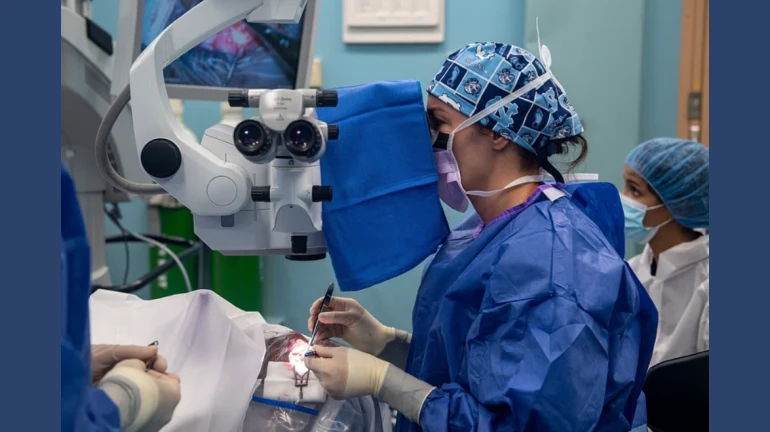
Apart from vector-borne diseases, the monsoon season increases the risk of eye diseases. While it brings relief from some heat, rainwater collected in puddles can become a ground for bacteria and fungi.
Dr Uday Tekchandani (Consultant Ophthalmologist, Vitreoretina, Uveitis and ROP Specialist) Dr Agarwals Eye Hospital, Wadala shares about what you need to know to keep your eyes safe:
Common Monsoon-Related Eye Conditions:
1. Conjunctivitis (Pink Eye): Conjunctivitis spread easily during the monsoon through contact with contaminated surfaces or airborne droplets. Viral or bacterial infections cause symptoms such as redness, itching, excessive tearing, and discharge from the eyes.
Prevention & Treatment:
2. Stye (Hordeolum): These are painful red lumps that develop on the eyelid margins, are another common concern exacerbated by sweat and humidity during the monsoon. These are usually caused by bacterial infections of the eyelash follicles or oil glands. The symptoms mainly include painful red lump on the eyelid, often filled with pus.
Prevention & Treatment:
3. Dry Eyes: Dry eyes are prevalent during the monsoon due to fluctuating humidity levels, causing inadequate tear production or poor tear quality. Symptoms include persistent itchiness, burning sensation, redness, and blurred vision. Managing dry eyes involves staying hydrated by drinking plenty of water, blinking frequently to spread tears evenly over the eye surface, and using preservative-free lubricating eye drops as recommended by an eye care professional.
Prevention & Treatment:
4. Fungal Infections: As humidity levels rise and environmental conditions become more favorable for microbial growth in monsoon. Fungal infections are a significant risk, often contracted from exposure to damp environments or contaminated water sources. These infections can lead to symptoms such as redness, pain, sensitivity to light, and discharge from the eyes.
Prevention & Treatment:
5. Corneal Ulcers: With rising humidity and favorable environmental conditions during the monsoon, corneal ulcers pose a significant risk due to bacterial, viral, or fungal infections, as well as physical trauma to the eye. Symptoms can include mild discomfort or severe pain, redness, blurred vision, and discharge. Seek immediate medical advice if symptoms persist.
Prevention & Treatment:
Dos and Don'ts for Monsoon to maintain Eye Health
Dos:
- Maintain Hygiene: Wash hands frequently; use clean towels and tissues.
- Use Protection: Wear sunglasses outdoors to shield from UV rays and irritants.
- Seek Medical Advice: Promptly consult an eye specialist for symptoms or discomfort.
- Stay Hydrated: Drink water to maintain eye moisture.
- Follow Prescriptions: Use prescribed medications or eye drops regularly.
Don'ts:
- Rub Eyes: Avoid touching or rubbing eyes with unwashed hands.
- Share Personal Items: Do not share towels, pillowcases, or eye cosmetics.
- Use Expired Products: Avoid using expired eye cosmetics or medications.
- Expose Eyes to Contaminants: Refrain from swimming in untreated or contaminated water.
- Neglect Symptoms: Seek medical help for persistent eye discomfort or symptoms.





